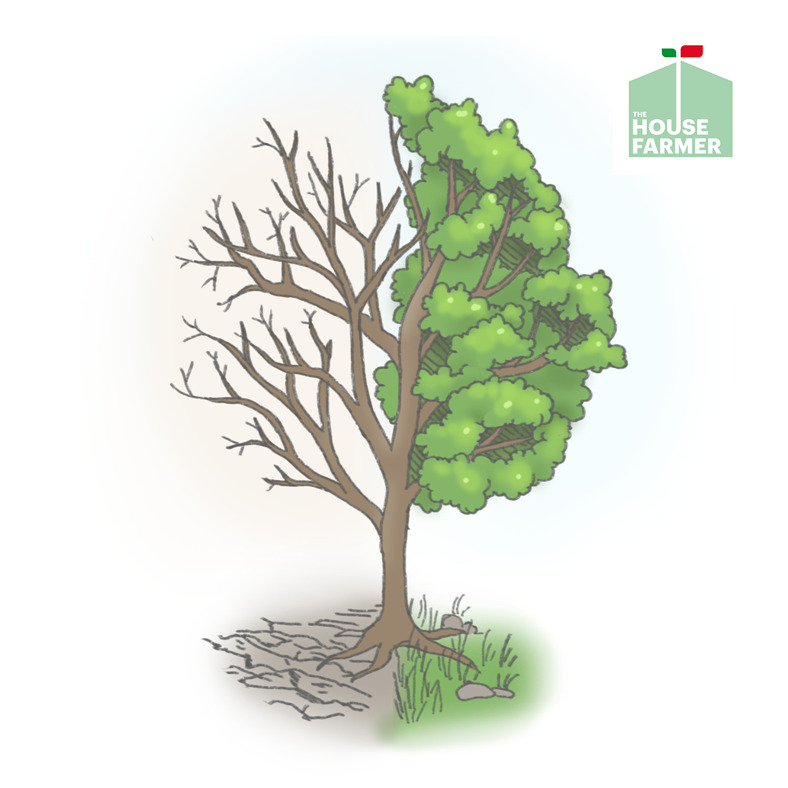
Veg for garden... as the wind blows #meandgrandma2
Would you like to grow veg for garden on your balcony? Or maybe you have tried but you think your small balcony is too exposed? This article is just what you need!
Veg for garden: what about the wind?
Right.
We usually turn our attention to the wind when we are in open areas, at the seaside or in the mountains, on a cliff, in the fields or in a wood. What about in the city when you have to deal with veg for garden? We never think about the wind in cities, yet it’s there and it can blow very hard. Some days in Milan the wind is so strong the air feels like slates of glass. And the sky is such a piercing blue it blows your mind. You would never expect such an intense blue sky in a city like Milan.
And yet there it is, the city can be generous, with hidden skies, clouds and even gardens.
Milan is my city, now and forever. Even with is winds.
Veg for garden in high terraces
Winds: in what way do they affect the vegetable garden of our urban apartments? The wind is an important factor prevalently for those who have elevated structures.
When I would go to the seaside the wind could sometimes be a real force, to the extent of uprooting trees.
My grandmother cried any time an olive tree was eradicated, or the branches of a lemon tree snapped. In the hills thongs was very different to the sea. More water was needed because it was even more exposed and windy. I know the comparison might seem somewhat unlikely, but the same happens on the balconies and terraces of high-rise blocks. They are just like the hills bordering the coastline and gardens on terraces exposed to the wind need more water.
It’s simple.
How careful should we be?
Wind is generally harmful because it causes water to evaporate very quickly, both from the pots themselves and from the plant tissue. The solution I adopted is a screen, which also serves as a means of having more privacy in these old houses where everyone can see everything. The wind is particularly harmful to small plants, so in my case salads. My grandmother always used to say that one should avoid growing small plants in extremely windy places. And she was right, because once you have decided where to grow your vegetable garden, the only thing you can control is irrigation.
Believe me, it is difficult to move a vegetable garden, and the pots available in stores cannot easily be moved once they are full.
Therefore, it is vital to be very careful when choosing where we want to position our terrace garden, and pay particular attention (also) to the wind.
Sun and wind on balcony vegetable gardens
Too much sun?
Create a little shade, maybe using a bamboo canopy.
Too much wind?
Sometimes a screen isn’t enough. When the wind is strong, everything will be blown away. If you are located on a high storey, the solution will depend on exactly where the terrace is positioned. The same holds true for city rooftops which are increasingly being used for urban growing, and also yield a good productivity.
It is therefore essential to plan carefully where you intend to situate your vegetable garden. An area of partial shade works well because it allows you to grow a bit of everything. In general, too much sun will dry everything and too little could simply be insufficient for the plants to grow. A useful system if you have enough space is to position the garden on wheels so you can move it according to need. However, this is easier said than done as traditional vases can be heavy and cumbersome to move. The solution I found was to place the garden on a pallet with wheels. It wasn’t easy but I had it customized to measure 40 cm by 120 cm. This way I can move it easily and it is also a good system to keep the terrace clean.
How much water
Once you’ve decided where to grow your garden, the next fundamental step is irrigation and working out how to get the water there. Plants in containers cannot absorb water from the surrounding earth as they would do in the open. Automatic irrigation can be a solution, however grandma used to say that not all plants have the same needs when it comes to water; for example garlic and onions require little water.
In some pots, plants can sustain a more consistent irrigation. while in others newly born sprouts will require just a few drops. In some pots water drains faster than in others, and the soil can retain water differently. So, each plant is different, every pot is different, every soil different, and the ideal solution is probably a balance between automatic and manual irrigation. Experimenting can be useful, however I followed my grandma’s advice: she used to say that the recipe for learning how much watering Is needed is to take time to study the weather.
Horti - relaxation... on the balcony
Engaging in urban horticulture activities is a great way to relax, certainly better than ironing :) Over time I have discovered that when I do gardening, I am overcome by the total absence of thoughts and it is a good way to inspire my creativity. I find watering particularly relaxing. The best time to water your garden is in the morning or late afternoon. While at night it is even poetic, or at least I think it is. And the humidity remains in the pot longer due to the darkness. Watering plants during the day is not that detrimental, however one should avoid getting the leaves wet as they could burn with the sun.
Read also: #meandgrandma3



